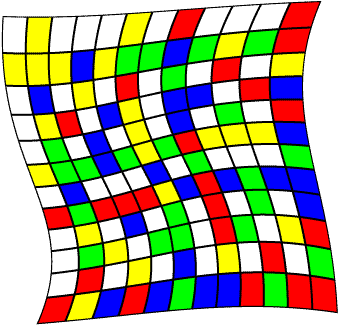 |
Fibonacci (Slide) Checkers
|
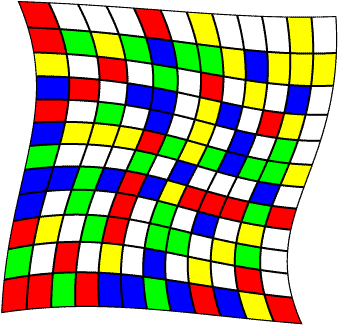 |
 |
Fibonacci (Slide) Checkers
|
 |
Fibonacci Checkers (or more simply, Slide Checkers) is a strategy game for two, three, or four players. It is played on a colorful board
that is generated from a well known number sequence. The game begins as players choose their color and alternately place pieces on the board. Players then maneuver their pieces, attempting to eliminate or capture their opponents. The game ends when all pieces remaining on the board are a single color, and that color is the victor.
Official Rules for Slide Checkers
A FRIENDLY SQUARE is a square which is the same color as the players pieces.
An ADJACENT SQUARE is any square that is next to a particular square, either horizontally or vertically or diagonally.
Setting Up: Each player chooses a color and receives playing pieces.
If there are 2 players, each receives 7
If there are 3 players, each receives 5
If there are 4 players, each receives 4
The pieces are placed, one per turn, on friendly squares. Different colored pieces may not be placed on adjacent squares.
After all pieces have been placed on the game board, play rotates clockwise. Each player moves one piece per turn. Moves consist of:
(1) Jumping an opponents piece (described below), or
(2) Moving one piece to any adjacent square, or
(3) If a piece begins a move on or adjacent to a friendly square, it may be moved into the freindly square and then to any position adjacent to that friendly square. This a piece may slide through friendly squares without ending its turn. This is called FREE MOVING.
For example:
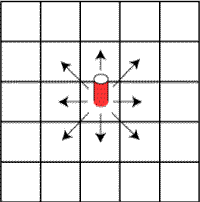 |
The red piece may move to any adjacent square. |
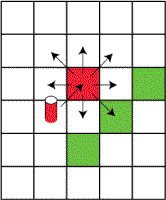 |
By free moving to the adjacent friendly square, the red piece may move to any of the indicated positions. |
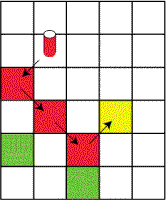 |
Red is shown free moving through three friendly squares in order to occupy the yellow position. |
If several friendly squares are connected, a player may choose to free move through the connected squares. Only one piece may occupy a square at a time, and pieces may not free move through an occupied square.
JUMPING: The types of jumps allowable in Fibonacci Checkers are shown below. In each diagram, it is reds move. Note the importance of friendly squares.
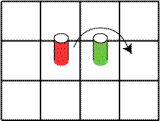 |
Red may jump. |
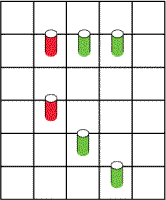 |
Red cannot jump. |
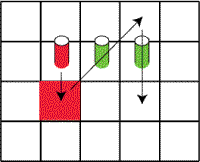 |
Red free moves to the adjacent friendly square and then jumps both green pieces. |
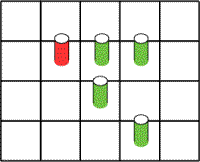 |
Red cannot jump. |
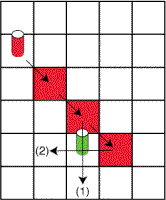 |
In case (1) red has free moved twice and then jumped the green piece. In case (2), red has chosen to free move three times before jumping. |
When the jump has been completed, the player has two options:
(1) REMOVE the jumped piece from the board, or
(2) EXCHANGE the jumped piece for one of his own color.
In case of multiple jumps, the player may remove or exchange each piece at his discretion.
A player must jump on his turn, if possible. If more than one jump is available, the player may choose which jump to make. After a jump, no free moves are allowed.
While the rules are simple, good strategies may not be so easy. A description of where the board comes from can be found here, along with a variety of alternative layouts and even a computer program to generate your own boards. Good luck and have fun!
![]()
To get to my homepage, click here.